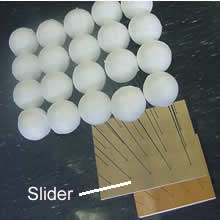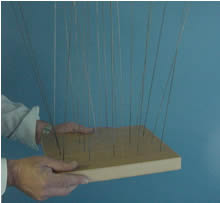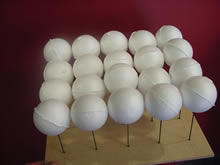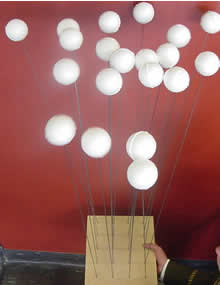Model
Material:
Drill
1m metal rods
20 polystyrene balls
Thick wooden base
Thin plywood to act as a slider as shown on the right.



When the slider
is pushed to the top, the balls are held together firmly and move about
as a unit. This simulates the particles of a solid. But when the slider
is pushed right to the bottom the balls move about independently at high
speeds when the metal rods are shaken. This simulates the particles of
a gas. Shaking the metal rods indicates energy input in the form of heat.
Moving the slider somewhere in the middle causes the balls to move about
while remaining close to each other, simulating the particles of a solid.
Click to see a 120kb video of the model
simulating a solid.
Click to see a 120kb video of the model
simulating a liquid.
Click to see a 120kb video of the model
simulating a gas.

As the slider moves from top to bottom it represents an in temperature.
In the gas state, the more energy given to the particles the greater their
From our model, we can conclude that particles in a have more energy than the particles of a which in turn have more energy than the particles in a .